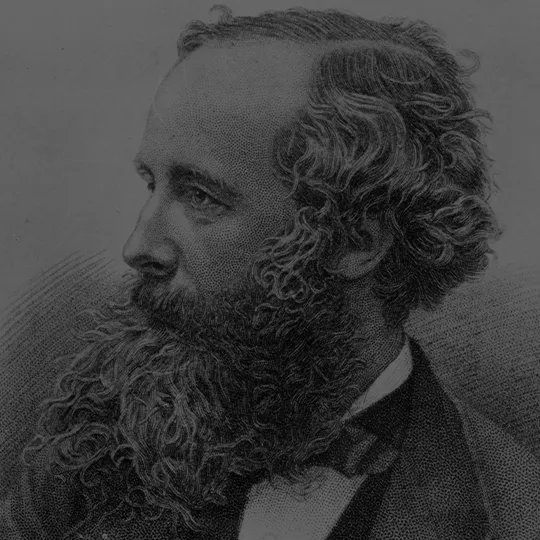
James Clerk Maxwell
World-leading scientist and mathematician
Biography
James Clerk Maxwell was a renowned scientist and mathematician, known for discovering the theory of electromagnetic radiation.
James was born in Edinburgh in 1831 to a family of comfortable means. As a child, he was exceptionally academic, with a love of geometry, poetry and drawing. Educated at the prestigious Edinburgh Academy, he found friendship in the form of fellow classmates, Lewis Campbell and Peter Guthrie-Tait, who would also go on to become world-leading scientists.
After leaving school, James attended the University of Edinburgh. Between classes, he began to experiment with chemical, electronic and magnetic apparatus. This would lay the foundations for several scientific discoveries, including photoelasticity (a term used to describe how objects interact with light, first coined by physicist David Brewster).
In 1850, James’ talents took him to Trinity College, University of Cambridge, where he studied mathematics. A devout Christian, James joined the Cambridge Apostles (an elite secret society at the time). After graduating, he returned to his native Scotland to take up a teaching post at Marischal College in Aberdeen. Here, he made his second major scientific discovery.
At just 25-years-old, James was much younger than his fellow professors. Undeterred by his comparative lack of experience, he committed himself to his studies and teaching. In particular, he turned his attention to the mystery of Saturn’s rings and how they remained stable without crashing into the planet. After two years of research, he eventually concluded that the rings consisted of numerous small particles, each orbiting Saturn individually. James won the 1857 Adams Prizes in recognition of this phenomenal find.
James came to King’s in 1860. His time on our campus saw him bring to life the theory of electromagnetic radiation. Arguably James’ most innovative discovery, electromagnetic radiation refers to streams of mass-less particles or ‘photons’ which travel in a wave-like motion (found in radio waves and microwaves). Other notable achievements included developing the world’s first light-fast colour photograph and what is now known as dimensional analysis (a system used for defining physical entities).
After five years, James left King’s and returned to Cambridge. There, he served as the first Cavendish Professor of Physics, before his death in 1879.
